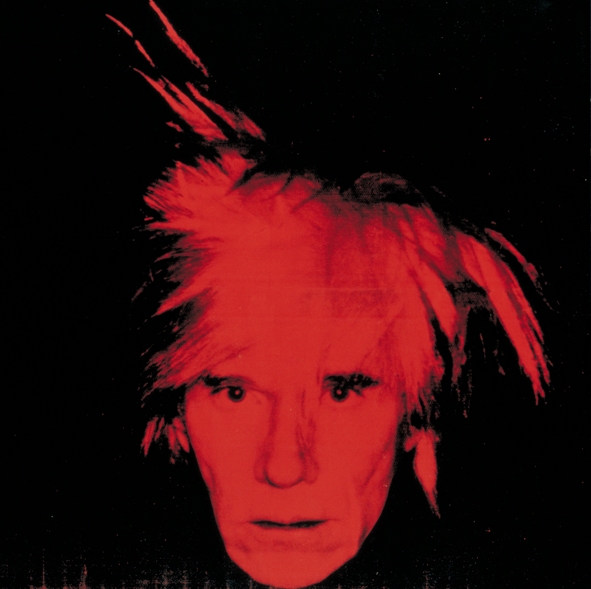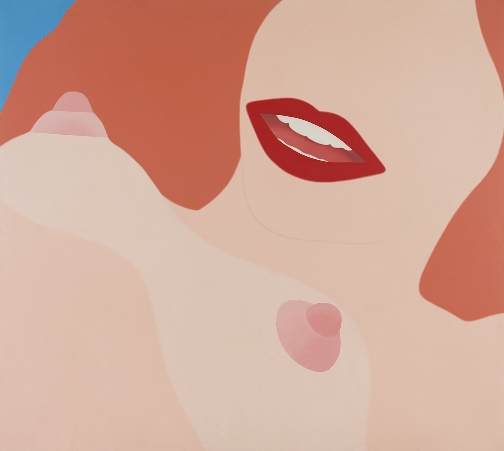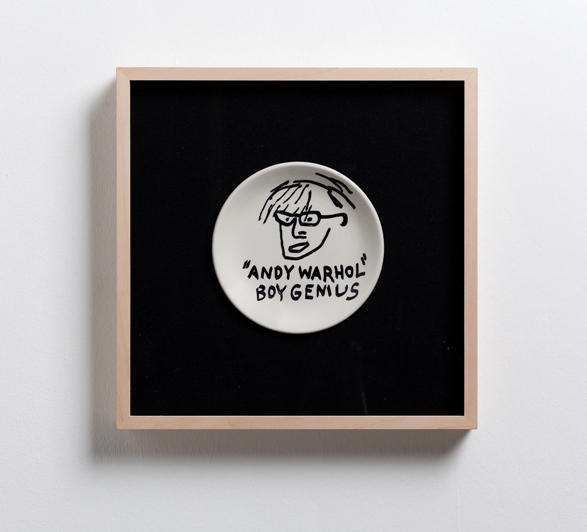![Coca-cola [3], 1962 (early), casein on cotton, 176.2x137.2, © 2013, The Andy Warhol Foundation for the Visual Arts, Inc./Artists Rights Society (ARS), New York/Photo: Elad Sarig](http://www.midnighteast.com/mag/wp-content/uploads/2013/08/MUGRABI_02.jpg)
Standing between Andy Warhol’s Coca Cola (1962) and a self-portrait from 1986 (among his last works before his death in 1987), Director and Chief Curator Suzanne Landau said, “It doesn’t matter whether it’s Coca Cola or a can of Campbell’s soup, or if it’s a portrait – these were all objects for him. There is no difference, there is no hierarchy, between portraits of celebrities, self-portraits, or depictions of everyday objects.”
Leading a press preview tour of WANTED, the Tel Aviv Museum’s upcoming exhibition of selected works from the Mugrabi collection set to open on Friday, August 9, 2013, Landau said, “When he drew the Coca Cola bottle, he made four versions, this one is number three. The first two were almost expressionist in style (it must be noted that this work is done by hand, with a paintbrush not like his later technique combining painting and print), this one is very precise, you can barely see the brushstrokes. Warhol asked his friend Emile de Antonio which version to choose. Antonio said: This Coca Cola, this is wonderful, this is us, this is the American society, this is the way.”
The 1962 painting led the way to a multi-faceted artistic career that was intensely involved with issues of popular culture, the relationship between public and private, duplication of the object and the effacement of the subject endless duplication. Looking at Warhol’s self-portrait, Landau said, “He usually tried to have all portraits without expression, that didn’t interest him, yet here I think, you can see a certain sadness in the eyes…it leads one to different interpretations, for example, a decapitated head or a Gorgon from Greek mythology… there is something here, a frozen expression…even a sense of memento mori as if he could see what was about to happen.”

These two images, with their associations of origins and intimations of mortality, provide an allusive arc, an imaginative gateway to WANTED. Landau has created an intriguing path through the collection and Pop Art, arranged neither chronologically, nor by artist, but in a freer, thematic relationship. It is an environment in which Warhol’s silvery Liz Diptych from 1963 graces the wall opposite Adam McEwen’s Safe (2011), a free-standing graphite sculpture of a safe, looming large in the open space between two rooms. Meticulously selected and precisely placed, the exhibition reflects the humor, artistic concerns and cultural context of Pop Art; often colorful, fun to view, and questioning…everything.

Warhol, a leading figure in Pop Art and in Mugrabi’s collection, fittingly sets the scene for the exhibition, which focuses on a small group of artists: Jean-Michel Basquiat, Tom Wesselmann, Richard Prince and Adam McEwen. Referring to the recent exhibition at the Metropolitan Museum, Regarding Warhol, exploring his influence on contemporary art, Landau said, “There is a certain momentum, and I think it’s important to note because I think there is a renewed interest in Pop, and specifically Warhol.” Among the highlights of this exhibition are Warhol’s Twenty Marilyns and a never-before exhibited work by Basquiat – Portraits 45 Plates (1983-84).

On display are 45 ceramic plates on which, Landau said, “Basquiat has made wonderful scribbles of artists or other people of significance to him, people who are part of his world…and in a few lines capturing their distinguishing characteristics.” When asked why these works have never before been exhibited, Landau speculated that Basquiat created them as a private activity, “maybe for his own amusement, or as a sort of homage.”
Reflecting on Warhol’s Coca Cola bottle, Landau said, “If you would put it in a time capsule, even this work on its own is a portrait of American society. After all, Warhol said: the most beautiful thing in Paris is MacDonald’s, the most beautiful thing in London is MacDonald’s. He was so much a part of Americana, American culture. There is no other artist who did it like him…If Rauschenberg said that he creates in the gap between art and life, Andy Warhol gets into that gap, he’s there. Art and life are one.”
WANTED: Selected Works from the Mugrabi Collection
The show opens on Friday, August 9, 2013 and has no closing date.
Tel Aviv Museum of Art, 27 Shaul Hamelech Blvd, Tel Aviv.





